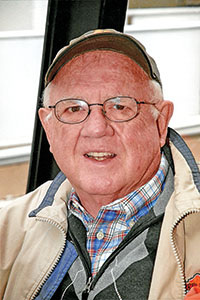As has been the case for a number of years, there’s still considerable interest and controversy among farriers when it comes to the theories behind Duckett’s Dot. But there’s no doubt the concept has played a key role in the evaluation of the horse’s hoof.
Developed by British and Pennsylvania farrier David Duckett, “Duckett’s Dot” refers to the center of weight bearing on the foot. He also developed “Duckett’s Bridge,” which is an external reference to the mechanical center of the hoof.
Two Theories Explained
In our March/April 1999 issue, American Farriers Journal published an article entitled “Duckett Vs. Russell,” which compared the hoof balancing theories that William Russell developed more than 125 years ago with those advocated over the past few decades by David Duckett. This in-depth article has led to a much better understanding of the ideas from both men on their different approaches to hoof-care work. In addition, the article shed new light on much of the considerable confusion relating to the theories of both men.
The article includes many direct comparisons from both Russell and Duckett in 15 different specific areas of hoof care. The article also includes 22 outstanding hoof and biomechanical illustrations that help explain the theories of both men.
Written by Maryland farrier Matthew Taimuty, the article may be the most in-depth article ever produced on Duckett’s Dot.
Russell’s ideas were first published in Scientific Horseshoeing, a book he wrote in 1879 that went through seven or more later editions. The ideas in the article from Duckett were taken from his lectures, clinics and personal interviews by the author.
A member of the International Horseshoeing Hall Of Fame and a Fellow of the Worshipful Company of Farriers, Duckett knew nothing of Russell’s earlier work when he developed his theories.
Russell’s work was based on anatomy as it related to the concept of hoof-capsule symmetry. On the other hand, Duckett’s work is based on the science of anatomy, physiology, physics and biomechanics.
More Science Today
While many of Russell’s theories have been shown to be inaccurate, they were a significant improvement over other information available at the time.
On the other hand, the scientific community and farriers in the field have proved Duckett’s work to be accurate and reproducible. In fact, his work is considered by many to be the industry’s standard criteria for much of today’s farrier science.
While a few farriers might argue that the actual positioning of Duckett’s Dot on the hoof is likely located a couple of millimeters away from where it should be, the principles remain the same.
This 11-page article should be on the reading list of every hoof-care professional. And it’s a valuable reference to be revisited from time to time.








Post a comment
Report Abusive Comment